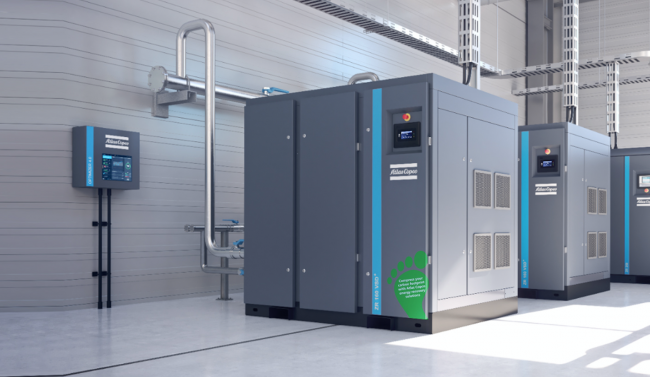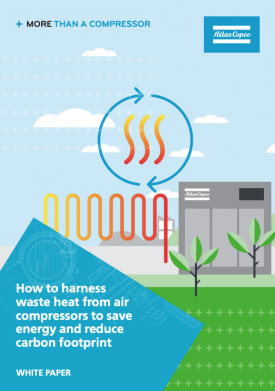2 minute read • published in partnership with Atlas Copco
The untapped opportunities to save energy & reduce carbon footprint via compressed air heat recovery
Atlas Copco has published a new whitepaper to highlight the vast unfulfilled potential of compressed air heat recovery as means of helping UK manufacturing firms to save energy and reduce their carbon footprint. The principal message to industry is that up to 94% of the energy supplied to a compressor is recoverable as heat and up to 90% of industrial compressors in the UK could be equipped with a waste heat recovery system.

To illustrate the vast untapped potential of compressed air heat recovery, it is calculated that the technology could save 1.99% of the total industrial electricity consumption in the UK / Picture: Atlas Copco
Alexander Pavlov, General Manager, Atlas Copco Compressors UK & Ireland, said: “The content underscores the reality that heat generated by compressors can often be harnessed almost in its entirety to help reduce energy usage and costs substantially. At the same time, it limits CO2 emissions and assists companies in achieving their carbon savings targets.”
Not only does the whitepaper identify the compressed air waste heat utilisation opportunities, it also reviews the established recovery methods, outlines the untapped carbon reductions and the energy savings potential for compressor users.
In addition, the whitepaper outlines the environmental and financial opportunities in investing in compressed air heat recovery systems, including installation of stand-alone, retrofit Energy Recovery units, that can see a payback period as short as 1-3 years.
The whitepaper’s main sections are devoted to an in-depth guide, supported with tables, graphics and calculations, with topics such as how heat can be recovered from compressors and the achievable levels of heat recovery. The merits and methodologies of air-cooled systems, water-cooled systems and oil-lubricated compressors are also covered.
The important issue of how much energy can be saved is fully explained − including an equation for calculating the recovery potential. This information points up the fact that the function of the cooling system, the distance to the point of consumption, and the degree and continuity of the heat requirement are all decisive factors.
The contents are completed with examples of industry sector process and plant heating system recovered heat applications. Practical application case studies have also been included to illustrate the financial benefits which investment in heat recovery systems can confer to compressor users.
